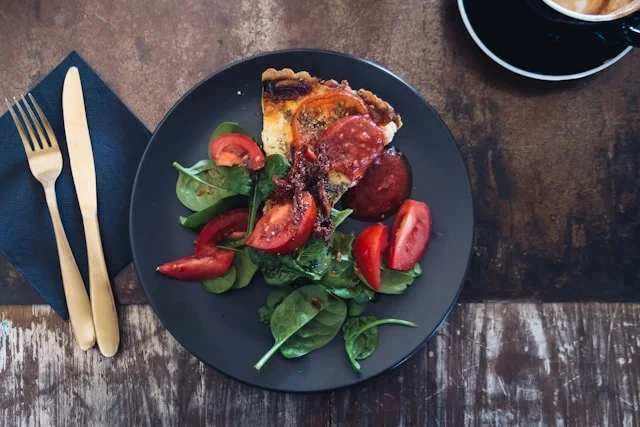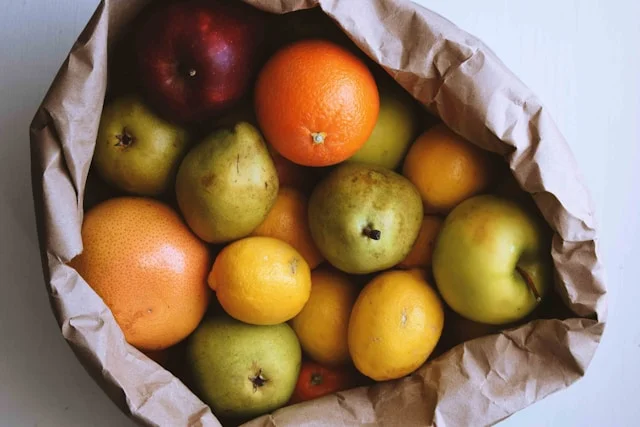Food Presentation Is Important For Dementia Patients
Dementia is a term that covers a range of conditions affecting the brain. It can make daily activities, like eating, more challenging. I have seen how much of a difference a simple thing like how food looks can make for someone with dementia.
If you care for someone with dementia, whether a loved one or a patient, you’ll want to know how to make their meals more enjoyable and easier to eat. In this post, I’ll explain why food presentation is so important for people with dementia and give you some practical tips on how to make food appealing for them.
Why Food Presentation Matters
People with dementia often struggle with eating. They might have a hard time recognizing food or using utensils. Changes in taste and appetite are also common. These challenges can make mealtimes stressful. But how food looks can make a big difference.
1. Visual Appeal and Recognition

Imagine looking at a plate and not being able to tell what’s on it. That’s what it can be like for someone with dementia. Bright, contrasting colors help them see and recognize food better. If the food blends together or looks dull, they might not be interested in eating it.
2. Stimulating Appetite

Just like you might be more excited to eat a beautifully plated meal at a restaurant, people with dementia are more likely to eat food that looks appealing. Colorful, well-arranged plates can make food seem more appetizing.
3. Encouraging Independence
When food is easy to see and pick up, it’s easier for someone with dementia to eat on their own. Using clear contrasts and simple arrangements can help them eat more independently. This not only makes them feel better but also reduces the burden on caregivers.
4. Enhancing the Mealtime Experience
Eating should be enjoyable, not just a necessity. For someone with dementia, a nicely presented meal can turn a stressful time into a pleasant experience. It can also provide a moment of normalcy in their day.
Now that you know why food presentation is important, let’s talk about how to make food look good for someone with dementia.
5 Best Ways to Present Food for People with Dementia
1. Use Bright Colors
Colors can be very powerful. Brightly colored foods are not only more visually appealing but also easier to see and recognize. Think about using a variety of colorful vegetables, fruits, and garnishes. Here are some simple ideas:
- Red tomatoes, green spinach, and yellow peppers on a white plate. The colors stand out and make each item easy to see.
- Blueberries and strawberries in yogurt. The bright colors are eye-catching and inviting.
- Orange carrots and green beans with grilled chicken. This not only looks good but also provides a variety of nutrients.
Bright colors can make a big difference. Just remember to avoid using too many similar colors in one dish, as they can blend together and become hard to distinguish.
2. Separate Foods Clearly
It’s easier to eat when you can clearly see each part of the meal. Keep different foods separate on the plate instead of mixing them together. This way, the person can easily identify what they are eating and choose what they want to eat first. Here’s how you can do this:
- Use divided plates or put foods in separate sections on a regular plate.
- Serve simple, single-dish meals like a piece of fish with a side of vegetables and a small serving of mashed potatoes.
- Avoid mixing foods too much, like casseroles or stews where it’s hard to tell what’s what.
Clear separation helps with recognition and choice, making eating less confusing and more enjoyable.
3. Make Food Easy to Handle
Finger foods are often easier for people with dementia to eat. They don’t have to worry about using utensils, which can be tricky. Think about serving foods that are easy to pick up and eat with the hands. Here are some ideas:
- Sandwiches cut into small squares or triangles. These are easy to hold and eat without much fuss.
- Sliced fruits and vegetables like apple slices, carrot sticks, or grape halves. These are colorful and simple to grab.
Bite-sized pieces of meat or cheese. You can cut these into small, manageable pieces that are easy to pick up and chew.
Making food easy to handle can help someone with dementia eat more comfortably and confidently.
4. Keep Portions Small
Large portions can be overwhelming. Smaller, more manageable portions are less intimidating and can make eating more enjoyable. You can always offer more if they are still hungry. Here’s how to manage portions:
- Serve smaller amounts of each food on the plate. This helps avoid the plate looking too crowded or overwhelming.
- Offer second helpings rather than a large portion all at once. It’s better to give a little and then add more if needed.
Use smaller plates to make the portions look more inviting and less daunting.
Small portions are less stressful and can make mealtime a more positive experience.
5. Pay Attention to Texture
Texture is important, especially for people with dementia who may have trouble chewing or swallowing. Soft, moist foods are usually easier to eat. Avoid dry, tough, or very hard foods that could be difficult to chew. Here are some texture-friendly ideas:
- Serve soft foods like mashed potatoes, scrambled eggs, or well-cooked vegetables.
- Offer moist foods with sauces or gravies that make them easier to swallow.
- Be cautious with crunchy or hard foods that might be difficult to manage.
By focusing on the texture, you can make sure that the food is not only appealing but also safe and comfortable to eat.
Foods That Are Aesthetically Pleasing for Someone with Dementia
Certain foods are naturally more appealing and easier to eat for people with dementia. Here’s a list of foods that are not only nutritious but also visually attractive and easy to handle:
Colorful Fruits

Fruits are a great way to add bright colors to the plate. They are sweet, refreshing, and usually easy to eat. Some of the best options include:
- Strawberries, blueberries, and raspberries: These are bright and can be served fresh or added to dishes like yogurt or cereal.
- Orange slices, apple wedges, and kiwi rounds: These are easy to hold and eat, providing both color and flavor.
- Grapes and cherry tomatoes: These can be served whole or halved for a bite-sized, colorful option.
Vibrant Vegetables

Vegetables come in a range of colors and can be prepared in various ways to make them more appealing. Here are some ideas:
- Carrot sticks, bell pepper slices, and cucumber rounds: These are easy to handle and full of color.
- Steamed broccoli and cauliflower florets: These can be served with a touch of seasoning for a soft and easy-to-eat option.
- Cherry tomatoes and snap peas: These are fun to eat and add a pop of color to the plate.
Protein-Rich Foods
Proteins are essential, and there are many ways to make them appealing and easy to eat.
Consider these options:
- Grilled chicken strips or meatballs: These can be seasoned and served in small pieces.
- Scrambled or boiled eggs: These are soft, easy to chew, and can be seasoned to taste.
- Slices of cheese or yogurt cups: These are easy to manage and provide a good source of protein.
Starchy Foods
Starches can be comforting and filling. Here are some that work well:
- Mashed potatoes or sweet potatoes: These are soft and can be flavored with herbs or a bit of butter.
- Small rolls or slices of bread: These can be served with spreads for a soft and manageable option.
- Pasta or rice dishes: These can be prepared in small, easy-to-eat portions with a bit of sauce.
Snacks and Sweets

A little treat can brighten anyone’s day. Here are some ideas for dementia-friendly snacks and sweets:
- Cookies or muffins: These can be served in small portions for a sweet treat.
- Pudding or fruit cups: These are soft and easy to eat with a spoon.
- Pieces of dark chocolate or small candies: These can be enjoyed in moderation and are easy to handle.
These foods not only look good but are also practical for someone with dementia. They are easy to recognize, handle, and eat, making mealtime more enjoyable.
What Does the Research Say?
Research consistently highlights the significant impact of food presentation on the eating habits and overall well-being of people with dementia. Studies show that visually appealing and thoughtfully presented meals can improve both the appetite and nutritional intake of dementia patients, who often struggle with various eating-related issues.
The Impact of Color and Visual Appeal
One major finding is the role of color and visual contrast in meal presentation. A study published in Boston University found that using brightly colored plates and food can enhance the visibility of the meal and make it more enticing for dementia patients .
This research aligns with the observation that individuals with dementia may have difficulty distinguishing food items, especially if they are similar in color or blend into the background of the plate. By making the food visually distinct and appealing, patients are more likely to engage with their meals, leading to better food intake and reduced risk of malnutrition.
Enhancing Independence and Enjoyment
Another critical aspect is the way food presentation can encourage independence and make mealtimes more enjoyable. A study in Dementia: The International Journal of Social Research and Practice examined how modifying the presentation of food can support self-feeding in dementia patients.
The researchers found that using finger foods and presenting meals in an easily accessible manner allowed patients to eat more independently. This not only enhances their dignity but also reduces the frustration often associated with mealtimes.
Furthermore, pleasant and thoughtfully arranged meals can transform eating from a stressful task into a positive experience, contributing to overall well-being and quality of life.
These findings underscore the importance of considering food presentation as a key element in the care and support of dementia patients. By focusing on how food looks, we can make significant strides in improving their daily lives.
